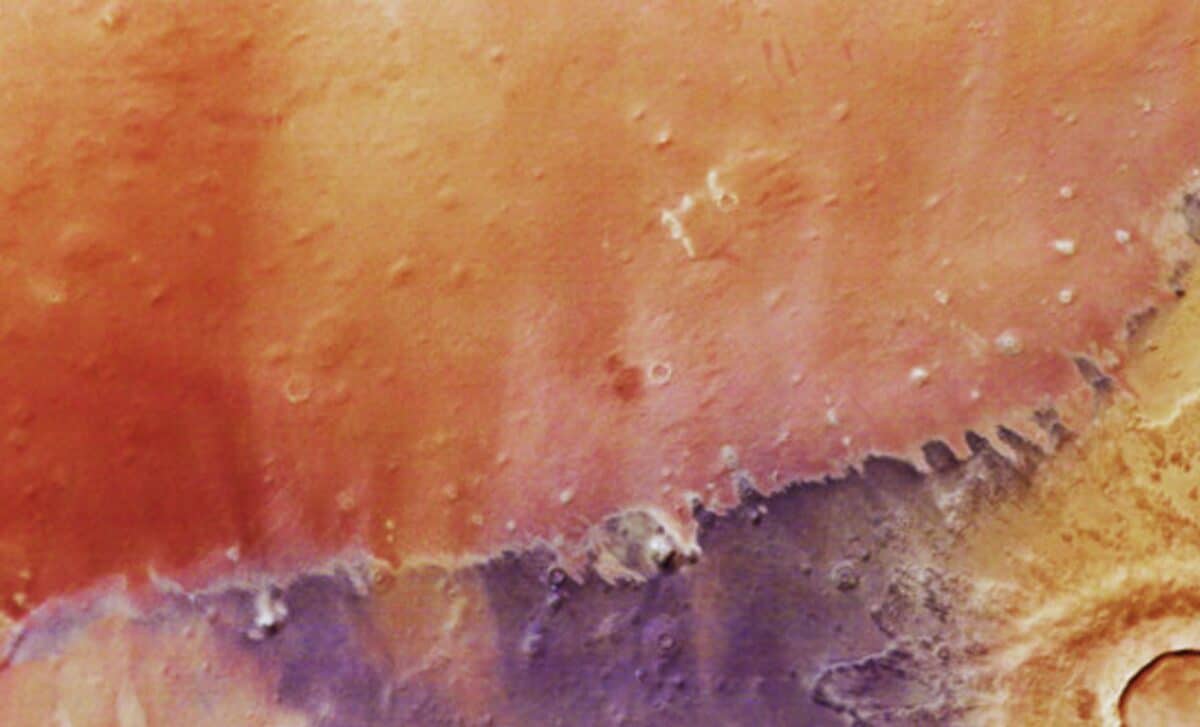
ESA’s Latest Image Provides an Unprecedented Glimpse of Mars’ Colorful Surface
How did your country report this? Share your view in the comments.
Diverging Reports Breakdown
ESA’s Latest Image Provides an Unprecedented Glimpse of Mars’ Colorful Surface
A new image from the European Space Agency shows a region of Mars known as Arcadia Planitia. The region is home to a large impact crater that is believed to be no older than 3 billion years old. The image also shows a range of colors on the surface of the planet, including red, yellow and orange. This could provide clues about the history of water on Mars and its potential to support human life in the future. The picture was taken by the ESA’s Mars Reconnaissance Orbiter, which is based in Chile and flies to the Red Planet twice a year for a total of six months in a year. For more information, visit the ESA’s Mars Recruiting Center in Chile at: http://www.marsrecruitingcenter.org/mars-recovery-center.html. For confidential support call the Samaritans on 08457 90 90 90 or visit a local Samaritans branch, see www.samaritans.org for details. In the U.S. call the National Suicide Prevention Lifeline at 1-800-273-8255.
The image features a large impact crater, dust devils in motion, and a dynamic interplay between different mineral compositions across the surface. This satellite snapshot not only contributes to our understanding of Mars’ past but also provides vital clues about its potential for future human exploration.
Arcadia Planitia: A Critical Region for Mars Research
Arcadia Planitia is located just northwest of Olympus Mons, the tallest volcano in the solar system, and serves as a key area for ongoing research into Mars’ past and future. The region is particularly interesting because it is home to solidified lava flows that are estimated to be no older than 3 billion years. These lava flows provide important clues about Mars’ geological history, shedding light on the processes that shaped its surface. Researchers are particularly intrigued by the possibility of water ice beneath the Martian soil, which could be crucial for future human missions.
Scientists believe that the presence of water ice near the surface of Arcadia Planitia could make the region a prime candidate for future exploration. Not only could this ice serve as a resource for astronauts, but it may also hold the key to understanding Mars’ ability to support life in the past. The combination of volcanic activity and potential water reserves makes this region of Mars a focal point for both scientific study and mission planning.
Topography of Arcadia Planitia (ESA)
Dust Devils and Wind Erosion: Natural Phenomena Shaping Mars’ Landscape
One of the most striking features of the new ESA image are the dust devils—tornado-like columns of dust and wind that appear as small, swirling puffs across the surface. These dust devils are created when the Martian surface heats up during the day, causing the air just above it to rise and carry dust with it. The image shows four dust devils moving across the plains of Arcadia Planitia, creating a subtle yet dynamic pattern against the backdrop of the red and brown terrain.
Dust devils are not just visually intriguing; they also provide valuable insights into the wind patterns and weather systems on Mars. Understanding how these dust devils form and behave can help scientists predict Martian weather and its impact on exploration missions. In addition, the wind’s role in shaping Mars’ surface is evident in the yardangs—ridges formed by wind erosion—which add another layer of complexity to the planet’s landscape. These natural features highlight the powerful role that wind plays in both the geological and atmospheric processes on Mars.
Impact Crater: Evidence of Water and Recent Geologic Activity
Located in the lower right corner of the image, an impact crater measuring 9 miles (15 kilometers) in diameter is a central feature of the ESA’s new Mars photograph. The crater’s geological composition provides intriguing evidence of Mars’ past environment. The presence of layered material around the crater suggests that the region once held significant amounts of water ice. The lack of erosion around the crater further suggests that the impact occurred relatively recently in Mars’ geological timeline, offering a glimpse into the planet’s evolving surface.
The discovery of water ice in the crater’s layers could have significant implications for both the history of water on Mars and the potential for future human settlements. Water is a critical resource for sustaining life, and finding evidence of it on Mars raises the possibility of utilizing in-situ resources for future missions. This impact crater thus serves as a reminder of the dynamic and ever-changing nature of the Martian surface, providing both challenges and opportunities for exploration.
The Science Behind Mars’ Unique Colors: What Makes the Surface So Diverse?
Mars is typically associated with its red appearance, primarily due to the presence of iron oxide (rust) on its surface. However, the ESA’s new satellite image reveals an unexpected range of colors, from purple and brown to yellow and orange. These colors are the result of varying concentrations of minerals and atmospheric conditions across different regions of the planet. The purplish-brown terrain of Arcadia Planitia, for instance, is rich in silicates and low in iron, which accounts for its distinct hue.
Other parts of the image, particularly the red regions at the top, display yardangs, which are formed when the wind erodes softer rock and leaves more resistant rock standing. This intricate play of minerals, wind erosion, and atmospheric processes not only adds beauty to the landscape but also provides valuable information about Mars’ geological history. By studying the colors of the Martian surface, scientists can better understand the mineral composition of the planet and its past environmental conditions, helping to piece together the puzzle of Mars’ potential to support life.
Source: https://dailygalaxy.com/2025/06/esas-latest-image-mars-colorful-surface/
